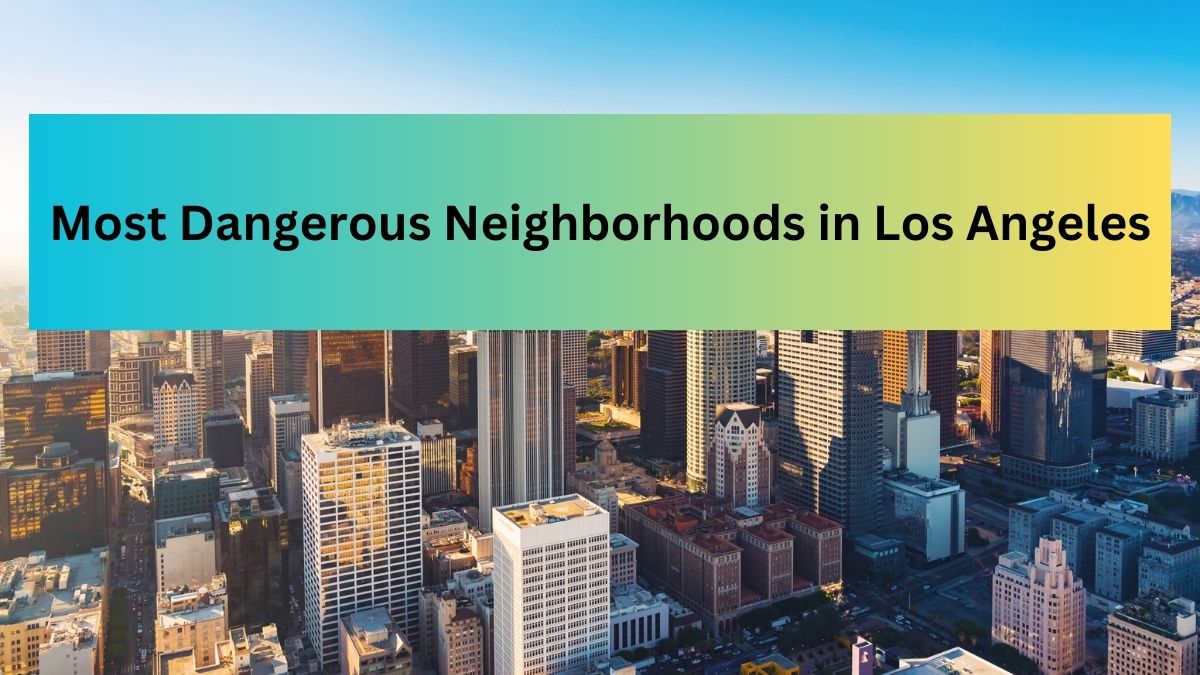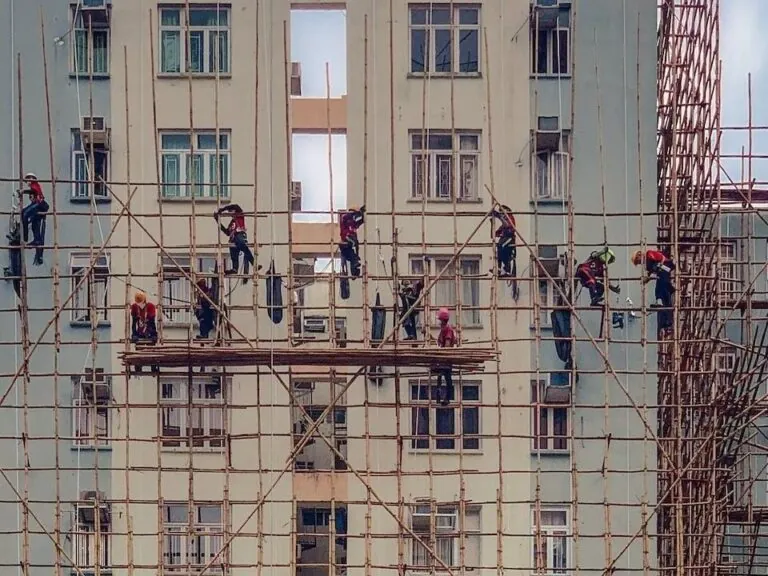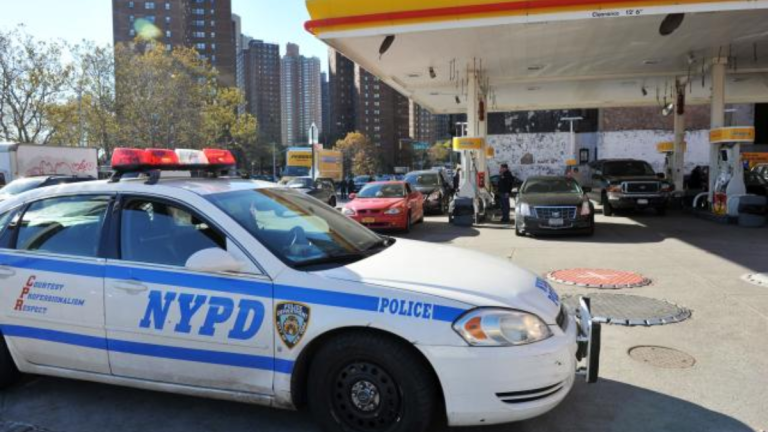Top 10 Most Dangerous Neighborhoods in Los Angeles With Highest Crime Rate (2023)
As a city renowned for its beautiful weather, stunning beaches, and towering mountains, Los Angeles has always been a desirable destination for many. However, it’s not all sunshine and rainbows in the City of Angels. Some neighbourhoods in LA are infamous for their high rates of violent crime, property crime, and vagrancy problems. If you plan on visiting or moving to LA, you must be aware of these areas. This article will look at the top ten most dangerous neighbourhoods in LA for 2023.
Most Dangerous Neighborhoods in Los Angeles (2023)
Downtown LA
Downtown LA, or DTLA, is notorious for being the most dangerous neighbourhood in Los Angeles. Despite being the city’s economic hub, it also attracts significant crime and illicit activities. FBI crime statistics reveal that the violent crime rate in DTLA is alarmingly high, making it 12 times more dangerous than the national average. Including property crimes, the overall crime rate in Downtown Los Angeles is a staggering 530% higher than the national average. The LAPD reports that in 2022 alone, there were 1,702 violent offences reported. Shockingly, the murder rate in Downtown LA hit an all-time high of 490 in 2018.
West Adams
West Adams is known as one of the most dangerous neighborhoods in Los Angeles with a high crime rate of 6,811 per 100,000 people and a population of 11,961. This means that residents have a 1 in 15 chance of becoming a victim of a crime. Most crimes committed in West Adams are violent and related to gang and drug activities. Despite the police presence in the area, the number of criminal incidents is overwhelming, leaving residents unprotected.
Crimes such as robbery, assault, and theft are prevalent in the area, in addition to gun violence. As a result, it is not recommended to walk alone at night. Even when using public transportation, many residents express concerns about safety in general.
3. Wholesale District/Skid Row
Skid Row, also known as the Wholesale District, is notoriously regarded as one of the most dangerous neighbourhoods in Los Angeles. With an estimated population of 9,000 to 15,000 permanently homeless individuals, it has become one of the largest homeless encampments in the United States. The sheer magnitude of homelessness in the area is often overwhelming for commuters and residents alike, leaving them feeling helpless in the face of such a dire situation.
According to recent statistics, crime rates in the Wholesale District have surged by 59% since 2010. In 2013 alone, there were 13,122 reported crimes, including 2,698 assaults, 1,350 vehicle break-ins, and 2,453 theft cases. Sadly, much of this criminal activity can be traced back to the homeless population’s drug trade, with other offences like pickpocketing and theft also increasing. San Pedro Street is particularly notorious for its high crime rate. Furthermore, after 6 p.m., Skid Row becomes a hub of gang and drug-related activity, as cycling or walking is prohibited.
Hollywood
It may come as a surprise, but Hollywood, despite being home to some of the world’s most prominent movie production companies, is also one of the most dangerous neighbourhoods in LA. With a population of 90,322, Hollywood has a crime rate of 4,894 per 100,000 people, which is 109% higher than the national average. Petty theft and pickpocketing are prevalent in the area, making it a notorious spot for such activities. Though walking during the day is relatively safe, it is crucial to keep personal belongings secure. It is not recommended to walk around the neighbourhood at night due to the high crime rate.
South Los Angeles
With a population of 249,670 and a crime rate of 4,268 per 100,000 people, South Los Angeles, formerly known as South Central, is notorious for being one of the most dangerous areas in LA. The prevalence of drug trafficking and gun violence, often tied to gang activity, has contributed to the area’s notoriety. Fortunately, a heightened police presence in South LA has led to a gradual decline in crime since the 1990s. However, the level of gang activity varies depending on the neighbourhood, and residents should exercise caution when walking at night. During the day, walking is relatively safer, and public transit is generally considered safe.
Compton
Compton, a neighbourhood in Los Angeles, is infamous for having one of the highest crime rates in the city. Despite decreasing crime rates since the 1990s, Compton is still considered a dangerous area plagued by gun violence, drug activity, poverty, and violent crime. In fact, with a population of 97,740 and a crime rate of 3,533 per 100,000 people, Compton is 51% more dangerous than the national average. While it’s true that Compton had the highest murder rate in the country in 2005, the rate has dropped in the past two decades. However, since 2020, there has been a surge in violent and property crimes in the neighbourhood. Despite a significant police presence, residents feel that law enforcement lacks the capacity to respond to incidents.
Watts
Watts, located in Los Angeles, is considered one of the most dangerous neighbourhoods in the area. The crime rate in Watts is 50% higher than the national average, with an overall crime rate of 3,514 per 100,000 people. Shockingly, the likelihood of becoming a victim of crime in Watts is 1 in 29. Despite the concerning statistics, it’s worth noting that the violent crime rate in Watts has decreased from the levels seen in the 1990s, similar to the trend observed in Compton.
Watts experienced a total of 1,574 incidents of violent crime and 1,943 incidents of property crime in 2022. It is advisable to avoid walking alone at night, taking public transit, or carrying a significant amount of cash or valuables to ensure personal safety.
Koreatown
Koreatown, with a population of 72,523, is known for its high crime rate of 2,978 per 100k people. This makes it 32% more dangerous than the national average. Sadly, the neighbourhood is notorious for gang and drug activity, which is prevalent in the area. Additionally, crimes like prostitution are also common. Koreatown’s Southern and Eastern regions are considered the most dangerous areas.
Other types of crimes are prevalent in the area, including robberies, assaults, and pickpocketing. These incidents often occur on public transportation, so it’s essential to be vigilant and monitor your belongings. To ensure your safety, it’s best to avoid walking alone at night and steer clear of neighbourhoods like Hancock Park and Wilshire Center. Remember always to stay alert and aware of your surroundings to avoid becoming a victim of crime.
9. Fashion District
The Fashion District, with a population of only 2,466, has a crime rate 28% higher than the national average. This means there are 2,870 crimes per 100,000 people, making the likelihood of becoming a victim 1 in 35. However, walking or taking public transportation during the day is relatively safe if you take the necessary precautions.
10. North Hollywood
North Hollywood, also known as NoHo, has a population of 64,587 people and a crime rate 2,592 per 100,000 individuals. This rate is 10% higher than the national average. The neighbourhood shares a boundary with Universal Studio and is known for criminal activities related to gangs and drug use.
In 2022, most crimes committed in North Hollywood were property crimes, which comprised 82% of the total. This includes offences such as burglary, robbery, and assault. However, during the day, areas around Magnolia, Lankershim, and the 170 highway are generally considered safe, and there are typically no issues when using public transit.
Conclusion
Los Angeles is a vast city that comprises a multitude of diverse neighbourhoods. Although some of these neighborhoods have a higher crime rate, they remain popular tourist destinations. Hollywood and Koreatown are prime examples of communities offering more affordable living options than other city areas. However, if safety is a priority, these neighbourhoods may not be the most suitable places to reside as they continue struggling with property crime and homelessness.
Also Read:
- Top 6 Most Dangerous Neighborhoods in San Francisco
- List of the Top 10 Most Dangerous Neighborhoods in Seattle
- List Of Top 10 Most Dangerous Neighborhoods in Baltimore
- List Of Top 9 Most Dangerous Neighborhoods in St. Louis
- Discovering Top 10 Most Dangerous Neighborhoods in NYC (2023)







